Tunisia, formally the Republic of Tunisia, has a population of 11.69 Mn people, making it the smallest country on the North African coast. Tunis is Tunisia’s capital and most populous city. This smallest African country is regarded as having the most diverse economy in the region, and it is possibly best known for its wide range of historic sites. Tunisia has one of the greatest living standards on the continent with a GDP of $38.3 Bn and a per capita income of $3,317.5. According to government estimations, the growth rate increased from 1.5% in 2015 to 2.5% in 2018, and this trend is expected to continue, reaching 2.7% in 2020.
Tunisia’s healthcare system in a nutshell
Tunisia’s public health care system is overseen by the Ministry of Health (Ministére de la Santé, MoS), which is assisted by numerous public institutions. According to MoS data, Tunisia’s health care system is divided into three levels: primary, with 81 clinics and 2091 basic health centers; secondary, with 109 district hospitals; and tertiary, with 33 regional hospitals and 24 modern teaching hospitals or CHUs (Center Hospitalier Universitaires). As a result, the public sector continues to be Tunisia’s principal healthcare provider, accounting for 87% of hospital bed capacity, with 31,936 beds. In terms of doctors, 51% work for the public sector and 49% for the private sector. In addition, public health infrastructure continues to expand, with numerous projects underway.
Even though private medicine has always existed, private clinics are a more recent development (except for the Clinique Saint Augustin, which was founded in 1933). According to MoS data, there are approximately 81 private clinics and medical centers. As a result, the private clinic building is predicted to pick up, with 75 new clinics slated to open by 2025.
Speaking of disease prevalence, currently, non-communicable diseases (NCDs), including diabetes, chronic respiratory conditions, vascular diseases, and cancer, have become the main health concern for the Tunisian population, accounting for 72% of deaths, according to figures from the World Health Organisation (WHO).
According to World Bank data, an important decline in communicable diseases has been observed. Thanks to vaccination campaigns, strategic plans, and improved access to clean drinking water and sanitation facilities. However, a low but significant increase in the prevalence of HIV is estimated in the coming years. There are several reasons for this expected increase in prevalence. Some of them include an increase in the number of key populations (homosexuals, drug abusers), disparities in the availability of ARTs, and others.
HIV Infection Prevalence
According to the WHO, the African region accounts for almost two-thirds of the global total of new HIV infections. The countries in sub-Saharan Africa like Eswatini, Lesotho, and Botswana have the highest rates of HIV. In 2019, Eswatini had the highest prevalence of HIV with a rate of 27%. The HIV prevalence in Tunisia is considered to be among the lowest in Africa, with about 0.03% of the entire population. This could be attributed to the healthcare system of Tunisia.
Tunisia has a city-centric healthcare system, meaning, the healthcare facilities and accessibility are better in the major cities than in the rural areas. Many hospitals we find in the major cities are of an international standard, and about 67.1% of the Tunisian population is situated in the urban region. Eventually, a large part of the population receives a better quality of healthcare. However, in addition to this, the government is also focussing on means to offset lingering inequalities in access to medical treatment in urban and rural areas. All these factors could contribute to the low prevalence of HIV in Tunisia.
However, the prevalent population in Tunisia is expected to increase in the next 5 years, given the growing incidence among key populations such as homosexual men (9.1% prevalence) where condom use is 50%, and PWDs (People Who Inject Drugs-6% prevalence), where the knowledge of HIV status is approximately 29% and condom use is 47%. The growth in incidence in key populations could be due to the fact of being surrounded by stigma and social norms which can lead to disparities in access to healthcare.
Efforts made by the healthcare system to combat HIV
In recent years, Tunisia has prioritized interventions for key populations under its National Strategic Plan and has committed to increasing domestic investment in the fight against HIV by creating more awareness and educating people. It also plans to invest more in healthcare workers and NGOs. As of now, they have established screening via over 25 diagnostic and counseling centers, and also, people affected with HIV receive free healthcare, transportation, and monthly allowance for those in need. Even after humongous efforts put in by the government and NGOs, in 2016, only 31% of the population are taking ART medication and only 15% of people receiving ART have received viral suppression which was way behind the WHO 90-90-90 target.
90–90–90: progress is being made, but the world is falling short of the 2020 goals
In 2016, the United Nations General Assembly adopted the 90–90–90 target, which sought to provide HIV testing and treatment to the great majority of individuals living with HIV by the end of 2020, as well as reduce the quantity of HIV in their systems to undetectable levels, so they can stay healthy and prevent the virus from spreading further.
Globally, considerable progress has been made in the HIV testing and treatment continuum. At the end of 2019, 81% of persons with HIV were aware of their HIV status, and more than two-thirds (67%) were receiving antiretroviral medication, amounting to an estimated 25.4 Mn of the 38 Mn individuals living with HIV- a figure that has more than tripled since 2010.
However, meeting the 90–90–90 goal requires a minimum of 73 percent of HIV-positive people to have suppressed viral levels, making the global objective by the end of 2020 unlikely to be achieved. The COVID-19 pandemic may have affected the viral load as well. Current goals aim to eliminate AIDS as a public health threat by 2030.
Overview of the pharmaceutical market in Tunisia
a. Market size
Due to the national strategic plan for HIV, it is assumed that significant progress will be made toward the WHO 90-90-90 target by 2024. The price per patient per year is forecasted to decrease ( a 4% decline yearly). This enables the government to treat a larger pool and the market size is almost estimated to double due to the increase in diagnosis and rate of treatment. The estimated market size is $0.5M to $1.8M by 2024.
b. Growth rate
The Ministry of Health of Tunisia had a budget of $1M (3M Tunisian Dirhams) for drug procurement in 2016, out of which approximately 40%-50% was allocated for procurement of ARTs. Tunisia has a higher demand for branded drugs than most of the other African markets, which is expected to grow at a rate of 10%. In addition, with the scale-up towards the 90-90-90 target, the growth is expected to be driven by the number of patients increasing from ~854 in 2016 to ~2200 in 2024. However, volume growth will be offset by some price declines (~10% decline by 2024), which will impact the growth of the market.
c. Market competition
Branded products capture over 90% share by value in Tunisia with top brand competitors being Gilead and GSK. In 2018, Gilead generated revenues in the range of $230K, driven by its 2 brands Atripla and Truvada. Its sales have further increased over the last 3-4 years. Another mighty brand is GSK with an estimated sales of $220K (2018) through its Lamivudine/ Zidovudine drugs used in the first line. Mylan has a reasonable share of the market and captures approximately 30%-40% (2018) patient share.
d. Top Pharma companies
The market has a large number of branded products in line with the preference of physicians. Gilead, GSK, and Merck are some of the top pharmaceutical companies. Atripla (Gilead), Truvada (Gilead), Epivir (GSK), Retrove (GSK), and Strocin (Merck) are among the top-selling ART drugs. The Central Pharmacy of Tunisia plays a key role in the procurement of drugs in Tunisia through tenders. There is no other private market.
e. Performance
As of now, the government initiatives have been yielding good results, but not good enough. The rate of diagnosis and treatment as of now is suboptimal. This could be one of the causes of patient attrition. The screening for co-infections, as of now, is also suboptimal. Only 10% of patients starting on ARVs were tested for HBV/ HCV, resulting in lower diagnosis rates of co-infections. In addition, the accessibility to healthcare in key populations is low. To tackle these discrepancies, the government has launched high-impact initiatives like the HIV Elimination Plans, aiming to target key populations, and the AIDS out of isolation plans, aiming to increase the rate of diagnosis of co-infection in HIV patients.
Conclusion
Despite relatively high government expenditures on health, Tunisia’s out-of-pocket (OOP) expenditures remain high (about 40%), indicating that health is a priority. Healthcare is a top priority for both the public and the government. With its own set of minor shortcomings, this advanced healthcare system model presents itself as a promising market for future investors.
References:
- UNAIDS
- UNAIDS – Tunisia – 2018 Progress reports submitted by countries
- Global HIV Targets, avert.org
- Central Pharmacy of Tunisia
- World Bank Data
- WHO document on Tunisia
- HIV Market Report – Clinton Health Access Initiative





